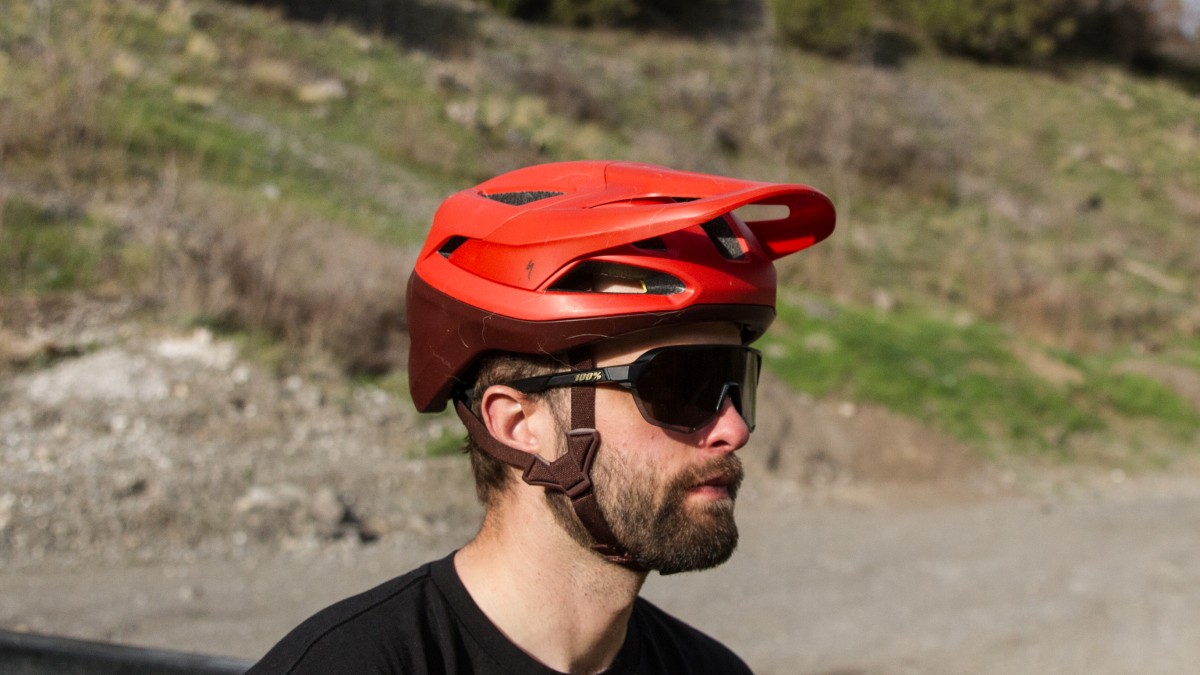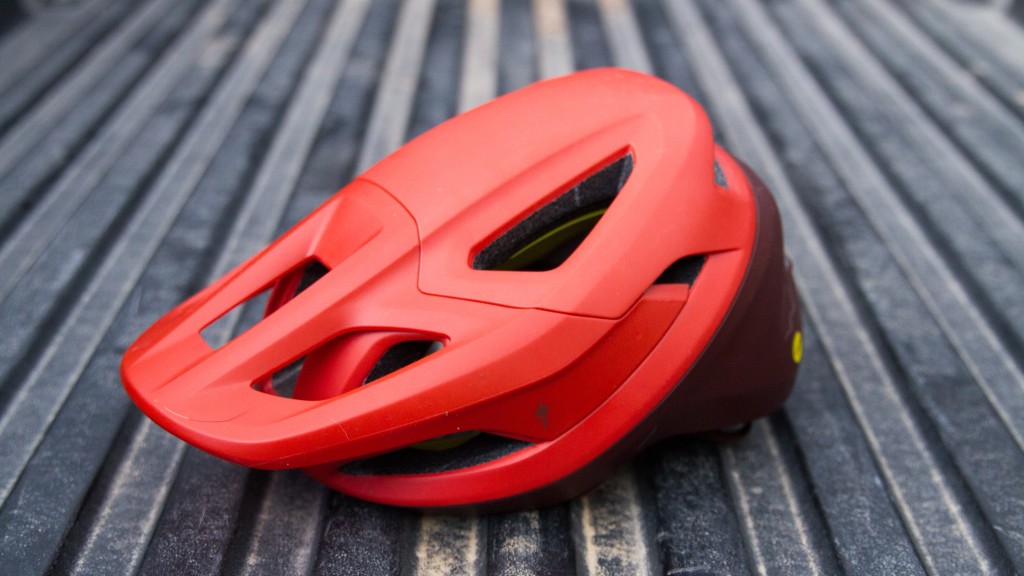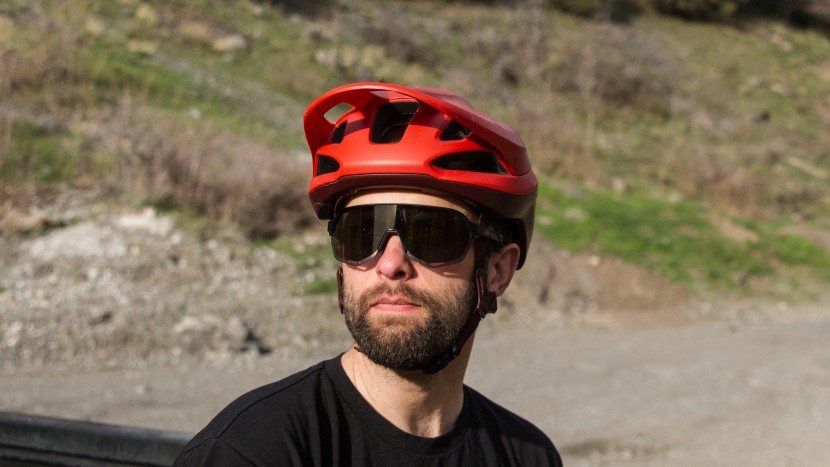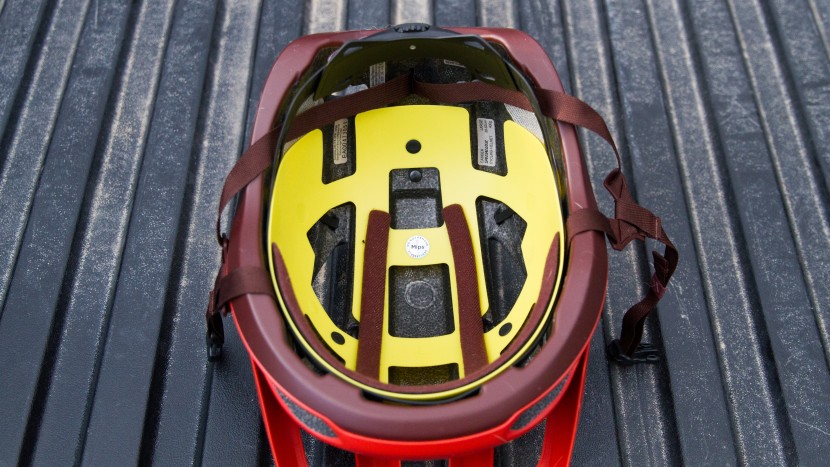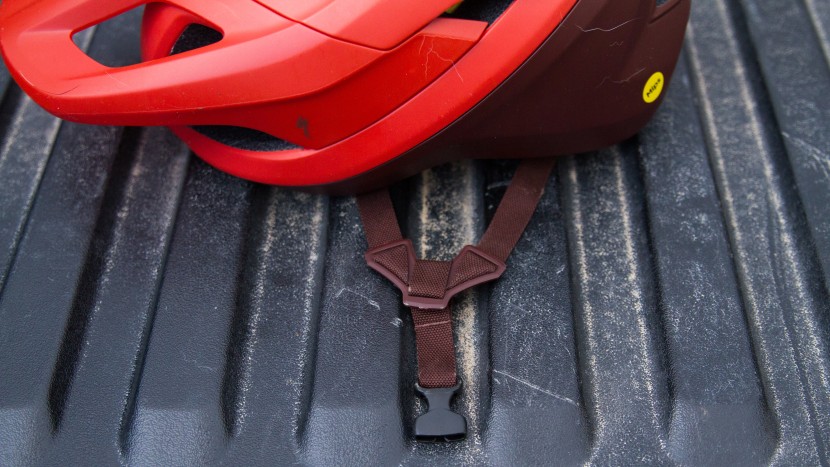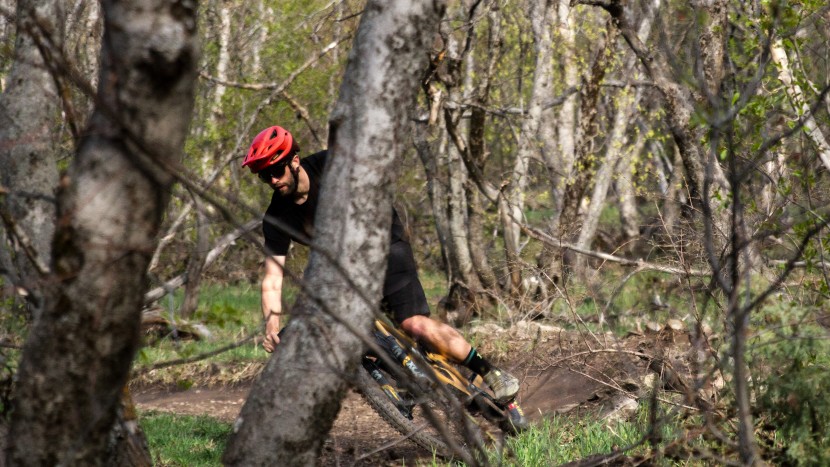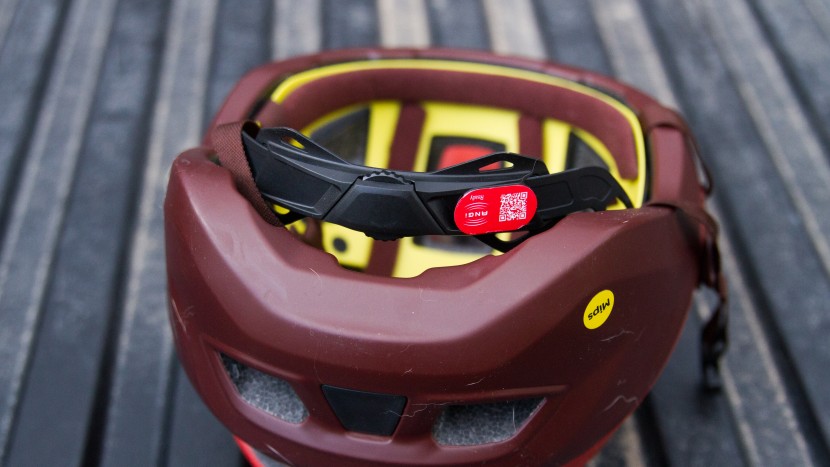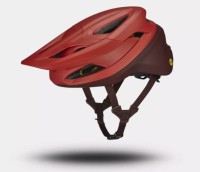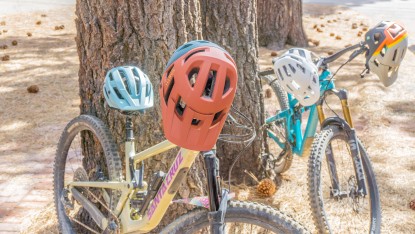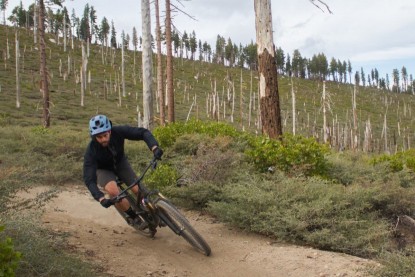
Our Verdict
Our Analysis and Test Results
When Specialized redesigned their half-shell mountain bike helmet lineup they made sure to cover all of their bases by offering the high-end, full-featured Ambush 2 alongside the mid-range, bare-essentials Camber. Typically lower-end helmets don't quite receive the same design attention as those that sit on the top shelf, but we appreciate that Specialized maintained the high-end styling across both models. Upon close inspection, a discerning eye will be able to tell that the Camber is the less-expensive model, but on the whole, it has the same sleek, aggressive styling as the Ambush 2. In our opinion, that's a pretty unique trait for a budget-friendly helmet and a big selling point of this model.
Impact Test
We performed drop tests in a lab, and the Camber came in about average in the lineup.
The Camber features the style and coverage of a helmet designed for aggressive riding. The substantial EPS shell drops low on the back of the head and at the temples like any modern helmet worth its salt. It sits low on your head and provides a sense of security when worn. Unlike most high-end helmets, it doesn't offer multi-density EPS foam.
These days, rotational impact protection is a must-have for almost any bicycle helmet, so we're glad to see that the technology has trickled down into budget-friendly helmets like the Camber. This model doesn't feature Specialized's lightweight Mips SL technology like the Ambush 2, but it does have the standard Mips internal plastic liner that rotates slightly in relation to the EPS shell with the goal of reducing forces from rotational impacts.
Comfort
While it isn't the most comfortable helmet we've ever tested, the Camber scored well in this metric. The combination of the EPS shell shape and internal padding provides a fit that should be versatile enough for just about any head shape.
During testing, we passed our size-large Camber around to a variety of friends and family and didn't receive any negative feedback about pressure points or pinching. The harness offers a wide range of adjustability, allowing for fine-tuning of the fit, and it distributes tension evenly around the head rather than pinching at the rear. Because the Camber uses a more traditional harness system that sits lower on the back of the head than the Ambush 2, we actually found it easier to achieve a secure, comfortable fit with this helmet, despite its lower price tag.
Ventilation
The Camber is a well-ventilated helmet overall, but as you might expect, it doesn't quite match up with the high-end models. With the carryover in styling from the Ambush 2 to the Camber, the two helmets actually have very similar ventilation designs, so we had high expectations given that the Ambush 2 is one of the airiest models we've tested.
The Camber doesn't have quite as many exit ports in the rear, but the intake vents on the front end are nearly identical. The biggest difference between the two models is the internal plastic Mips liner in the Camber, and we found that it has a negative impact on breathability. The plastic sheet doesn't allow air to flow as freely and interface with your scalp as well as the almost nonexistent Mips SL system in the Ambush. It also creates more solid contact between the helmet and your scalp, which means things can get sweaty and warm a bit more easily. We found that the Camber got a little bit warm over the course of long rides and on hotter days. Although it does not quite live up to the expectations set by its pricier counterpart in terms of ventilation, we found that the Camber does an admirable job of managing sweat and keeping it out of your eyes and away from your eyewear.
Usability
As you might expect from a helmet that costs less than a hundred dollars, the Camber does not come equipped with many features. With the exception of the inclusion of Mips, this model is just about as bare-bones as you'll find in the mountain bike helmet market. The visor is substantial but its position is fixed in a relatively high position, meaning that you can't lower it to keep the sun out of your eyes or raise it to store goggles on the front of the helmet. It has a modern, stylish look, but it isn't the most practical. Additionally, the visor is not removable and will not pop off in the event of a crash, unlike the Ambush 2. The Tri-Fix strap splitters effectively manage the harness straps and allow for some adjustment. It's not a particularly easy adjustment to make, but once you have it set for your head shape, you shouldn't have to worry about it again.
The Camber is compatible with the specialized ANGi crash detection sensor, which can send a notification to a loved one with your location in the event of a crash. The sensor does not come standard, however, and has to be purchased as an aftermarket add-on. Regardless, we count the compatibility as a check in the positive column for this model, given that the ANGi sensor is a unique value add.
Weight
Tipping the scales at 394 grams for our size-large test helmet, the Camber is surprisingly light considering its agro styling and hefty visor. For reference, the lightest helmets we tested were right around 360 grams, while the heaviest weigh 500-plus grams. The Camber actually only comes in 16 grams heavier than the high-end Ambush 2.
Should You Buy the Specialized Camber?
Overall, the Camber is one of the best values on the market. It's a stylish, comfortable, and protective helmet that costs significantly less than some similarly rated models in our test. If visor adjustability isn't your top priority and you're looking for a great helmet on a budget, we wholeheartedly recommend this one.
What Other Mountain Bike Helmets Should You Consider?
The Lazer Coyote KinetiCore is well worth your consideration as an excellent budget option, offering top scores in some metrics for half the price of some helmets. If you like the Specialized brand but want higher performance, take a look at the Specialized Ambush 2.
| Awards | |
|---|---|
| Price | $80 List Check Backcountry (on sale!) |
Overall Score  |
|
| Star Rating | |
| Bottom Line | An affordable helmet with high-end styling and coverage |
| Pros | Very affordable, great coverage, stylish, comfortable, Mips |
| Cons | Fixed visor, warm, visor doesn't detach |
| Rating Categories | Specialized Camber |
| Impact Test (30%) | |
| Comfort (20%) | |
| Ventilation (20%) | |
| Usability (15%) | |
| Weight (15%) | |
| Specifications | Specialized Camber |
| Rotational Impact Protection System | Mips |
| Weight (Ounces, Grams) | 13.8 oz, 394g |
| Number of vents | 13 |
| Goggle or Sunglasses Integration | No |
| Adjustable Visor | No |
| Sizes | XS, S, M, L, XL |
| Certifications | CPSC |
| Virginia Tech Helmet Safety Rating (if applicable) | 5-star |


